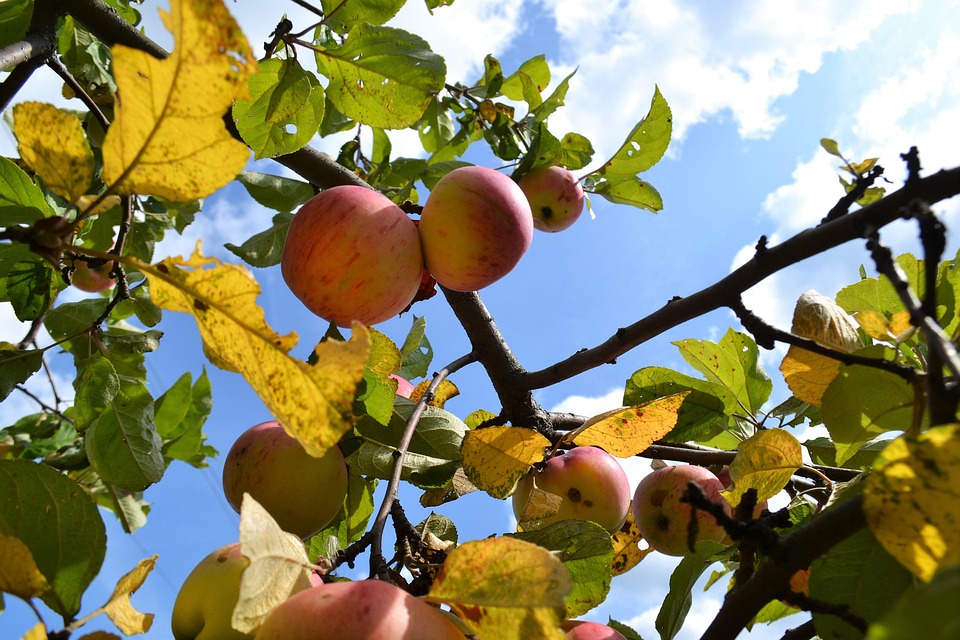**Beyond Organic: The Surprising Economic Advantages of Sustainable Farming**
# Beyond Organic: The Surprising Economic Advantages of Sustainable Farming When I first set foot on my little patch of earth, I was mesmerized by the community of creatures that called it home. My ambition was simple: grow enough food to thrive while respecting the land’s gifts. Little did I know, this decision would not only nourish my family and friends but would also unveil a world of economic potential. Today, sustainable farming isn’t merely a lifestyle choice; it’s a savvy, forward-thinking economic move that offers surprising advantages over traditional practices. Let’s dig deep into the myriad economic benefits of sustainable farming and explore how going beyond organic can enrich both the soil and your wallet. ## Understanding Sustainable Farming Sustainable farming encompasses agricultural practices that focus on producing food, fiber, or other goods while ensuring environmental health, economic profitability, and social and economic equity. Unlike traditional farming, which often relies on synthetic fertilizers and pesticides, sustainable farming leverages crop rotations, organic inputs, and biodiversity to create a balanced ecosystem. The term “beyond organic” suggests an even deeper commitment, going beyond certification and incorporating practices that enhance soil health, water conservation, and the overall well-being of the ecosystem. By investing in these methods, farmers can create a resilient farming practice that not only sustains the land but also offers diverse economic benefits. ## Economic Advantages of Sustainable Farming ### 1. **Lower Input Costs** One of the most compelling economic benefits of sustainable farming is the reduction in input costs. By focusing on natural fertilizers and pest control methods such as crop rotation, cover crops, and companion planting, you can significantly decrease reliance on expensive chemical inputs. This means fewer purchases of synthetic fertilizers, pesticides, and herbicides, dramatically lowering your operating costs. ### 2. **Higher Market Prices** Consumers are increasingly willing to pay a premium for sustainably produced goods. Studies have shown that sustainably sourced products can command higher prices compared to conventionally grown counterparts. This trend is driven by consumer awareness of health, environmental, and ethical impacts. By offering “beyond organic” products, farmers can tap into this profitable niche market, bolstering their income. ### 3. **Diverse Revenue Streams** Sustainable farming isn’t solely about crop production; it’s about creating a thriving ecosystem of products and services. Farmers can diversify their income streams through agro-tourism, farm-to-table dining experiences, and educational workshops on sustainable practices. For example, a small farm might offer guided tours, cooking classes, or even sell homemade goods like jams and pickles. This enhances financial resilience and opens up numerous avenues for profit. ### 4. **Soil Health and Resilience** Healthy soil leads to healthier crops, which in return translates to better financial returns. Sustainable farming practices, such as composting and no-till methods, improve soil structure and fertility, leading to increased yields over time. This capitalizes on the idea that investing in soil health can reduce the need for future investments in fertilizers or land reclamation. ### 5. **Water Conservation** Efficient water management systems, such as drip irrigation and rainwater harvesting, are integral to sustainable farming. Not only do these methods ensure that crops receive the right amount of water, but they also reduce the utility bills associated with conventional irrigation methods. Saving water translates to saving money, making it a win-win for both the farmer and the environment. ### 6. **Government Support and Incentives** Governments and organizations worldwide are waking up to the benefits of sustainable agriculture, implementing programs to support farmers venturing into sustainable practices. This can come in the form of grants, subsidies, and tax relief. By aligning with sustainable practices, farmers position themselves to take advantage of these programs, which can lead to significant financial savings. ### 7. **Community Engagement** Creating a sustainable farm encourages community involvement and strengthens local economies. Farmers who grow sustainably often find themselves at the heart of a supportive community, where local businesses, restaurants, and consumers rally around their products. This sense of community leads to increased sales locally and further enhances the resilience of the local economy. ### 8. **Reduced Risks and Vulnerabilities** Sustainable farming methods often equip farms to better withstand climate change and economic fluctuations. Crop diversity minimizes the risk of total crop failure due to pests, disease, or adverse weather. This resilience translates to economic stability, providing peace of mind for farmers well into the future. ### 9. **Brand Loyalty and Consumer Trust** Sustainable farmers build strong connections with their customers through transparency and ethical practices. By creating trust around their brand, these farmers often find loyal customers willing to support them season after season, ensuring a stable income stream. ## Pro Tips for Sustainable Farmers To maximize the economic advantages of sustainable farming, consider these pro tips: 1. **Start Small:** If you’re new to sustainable practices, begin with a few key changes—perhaps by composting or starting a small vegetable garden. Gradually expand your practices as you gain confidence. 2. **Educate Yourself:** Take advantage of local workshops, online courses, and agricultural extension programs. Knowledge is power, especially when it comes to sustainable practices. 3. **Network:** Connect with other sustainable farmers in your area. Sharing resources, tips, and even products can create a stronger local farming community. 4. **Utilize Technology:** Explore modern farm management tools for tracking expenses, yields, and soil health. Technology can streamline operations and help make informed decisions. 5. **Market Smartly:** Engage with customers through social media and local farmers’ markets. Sharing your sustainable journey can attract consumers who value ethically produced products. 6. **Stay Informed:** Keep abreast of policies and grants that support sustainable farming. Understanding available resources can lessen financial burdens. ## Conclusion The journey of sustainable farming extends far beyond merely growing crops; it’s about redefining the relationship between the farmer, the consumer, and the planet. With economic advantages like reduced input costs, higher market prices, and diverse revenue streams, sustainable farming is not just a lifestyle—it’s a smart business strategy that resonates deeply with today’s environmentally conscious consumer. As you delve into the world of sustainable farming, remember that each step










